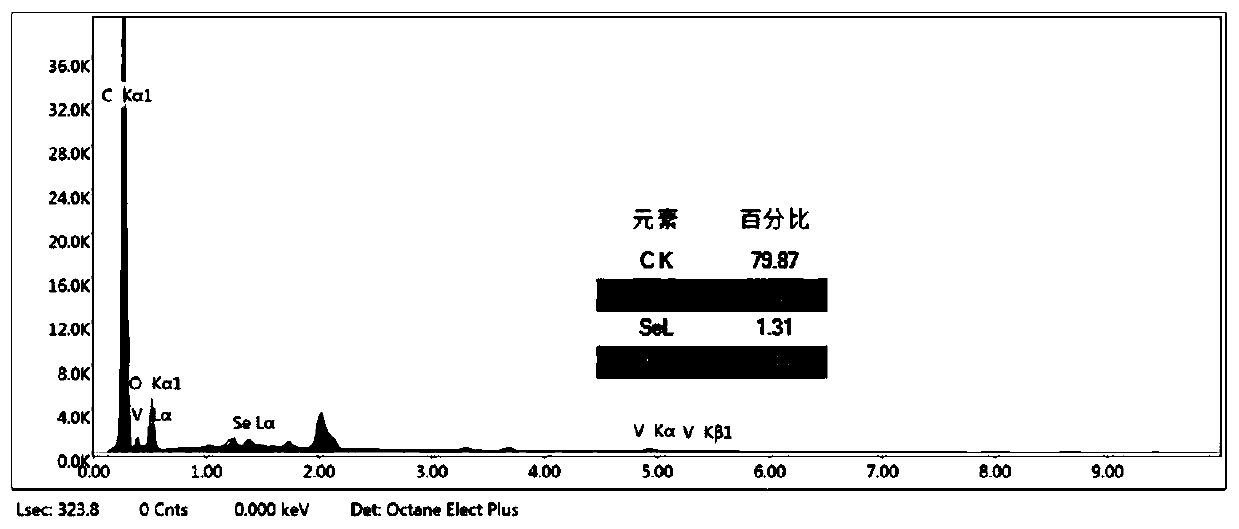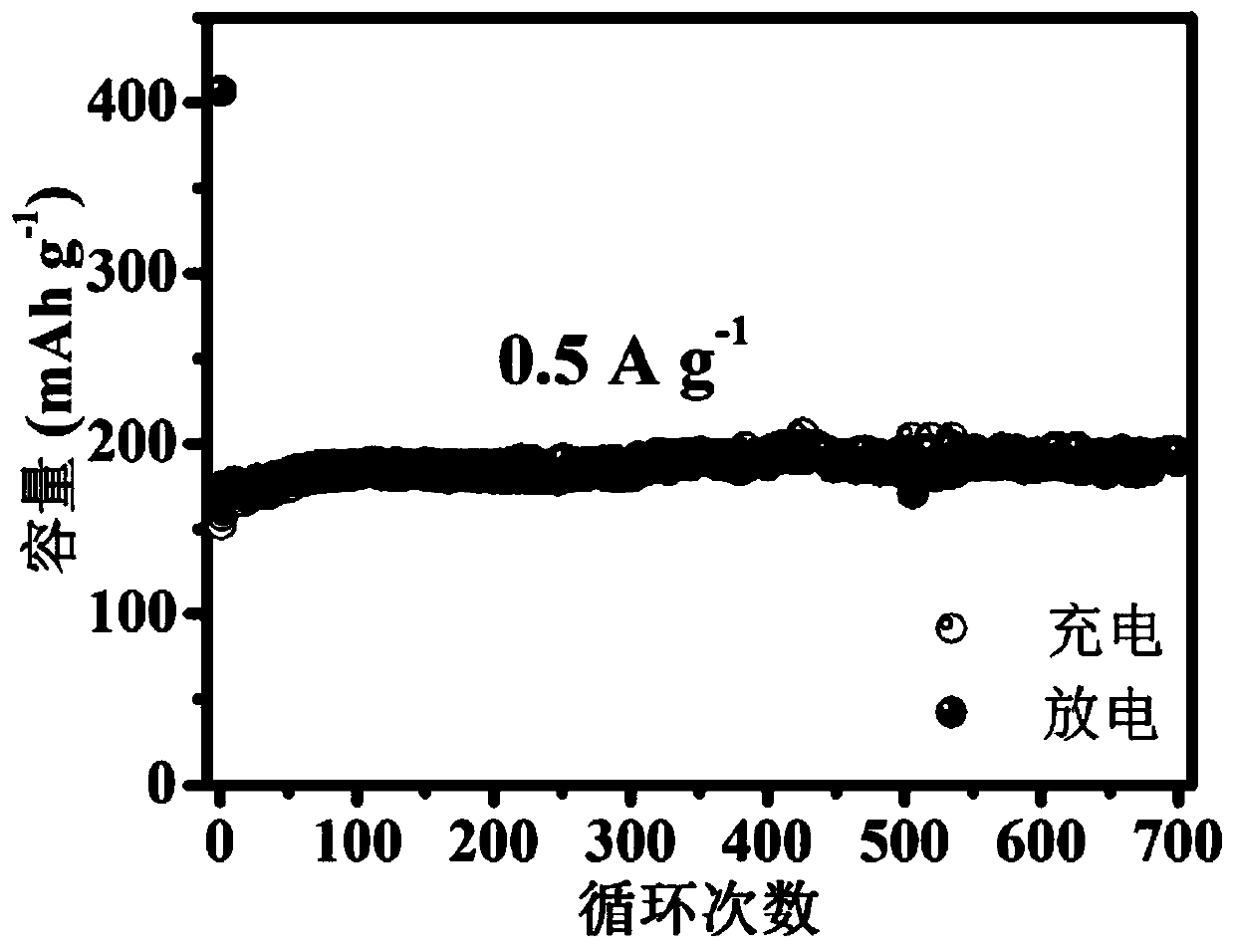Self-supporting sodium ion battery negative electrode material based on 3D printing and preparation method thereof
A sodium ion battery, 3D printing technology, applied in the direction of 3D object support structure, battery electrode, carbon preparation/purification, etc., can solve the problem of active material detached from the current collector, and achieve improved sodium storage performance, low energy consumption, and shape controllable effect
- Summary
- Abstract
- Description
- Claims
- Application Information
AI Technical Summary
Problems solved by technology
Method used
Image
Examples
Embodiment 1
[0037] 1. A self-supporting sodium ion battery negative electrode material based on 3D printing, characterized in that it is made of the following components in weight percentage:
[0038] PLA40
[0039] Chlorella 58
[0040] white oil 2
[0041] 2. A method for preparing a self-supporting sodium-ion battery negative electrode material based on 3D printing, comprising the following steps:
[0042] A. After mixing PLA, pellets and white oil in the formula quantity, melt and extrude granulation through twin-screw extruder. The process parameters of twin-screw extruder are 123, 135, 142, 160, 166, 170 , 170, 165, 155, 140 ℃, die head temperature is 170 ℃, screw speed is 50 rpm;
[0043] B. Pull the obtained pellets into 3D printing wire through a single-screw wire extruder. The process parameters of the single-screw wire extruder are the processing temperature of 180°C, the screw speed of 20 rpm, and the water temperature of the first stage of water cooling is 40°C; the second...
Embodiment 2
[0050] 1. A self-supporting sodium ion battery negative electrode material based on 3D printing, characterized in that it is made of the following components in weight percentage:
[0051] ABS50
[0052] Chlorella 49
[0053] white oil 1
[0054] 2. A method for preparing a self-supporting sodium-ion battery negative electrode material based on 3D printing, comprising the following steps:
[0055] A. After mixing the ABS, pellets and white oil in the formula amount, melt and extrude the pellets through the twin-screw extruder. The process parameters of the twin-screw extruder are 130, 145, 152, 170, 186, 200 , 200, 195, 190, 185 ℃, the die head temperature is 180 ℃, the screw speed is 80 rpm;
[0056] B. Pull the obtained pellets into 3D printing wire through a single-screw wire extruder. The process parameters of the single-screw wire extruder are the processing temperature of 200°C, the screw speed of 20 rpm, and the water temperature of the first stage of water cooling i...
Embodiment 3
[0062] 1. A self-supporting sodium ion battery negative electrode material based on 3D printing, characterized in that it is made of the following components in weight percentage:
[0063] TPU / ABS(50wt%:50wt%) 38
[0064] Chlorella 59
[0065] white oil 3
[0066] 2. A method for preparing a self-supporting sodium-ion battery negative electrode material based on 3D printing, comprising the following steps:
[0067] A. After mixing the TPU / ABS (50wt%:50wt%), pellets and white oil of the formula amount, the twin-screw extruder is melted and extruded to granulate. The twin-screw extruder process parameters are that the temperature of each section is 130, 145, 150, 165, 180, 190, 190, 185, 180, 180°C, die head temperature is 170°C, screw speed is 60 rpm;
[0068] B. Pull the obtained pellets into 3D printing wire through a single-screw wire extruder. The process parameters of the single-screw wire extruder are processing temperature 190°C, screw speed 30 rpm, and water temperat...
PUM
 Login to View More
Login to View More Abstract
Description
Claims
Application Information
 Login to View More
Login to View More - R&D
- Intellectual Property
- Life Sciences
- Materials
- Tech Scout
- Unparalleled Data Quality
- Higher Quality Content
- 60% Fewer Hallucinations
Browse by: Latest US Patents, China's latest patents, Technical Efficacy Thesaurus, Application Domain, Technology Topic, Popular Technical Reports.
© 2025 PatSnap. All rights reserved.Legal|Privacy policy|Modern Slavery Act Transparency Statement|Sitemap|About US| Contact US: help@patsnap.com



